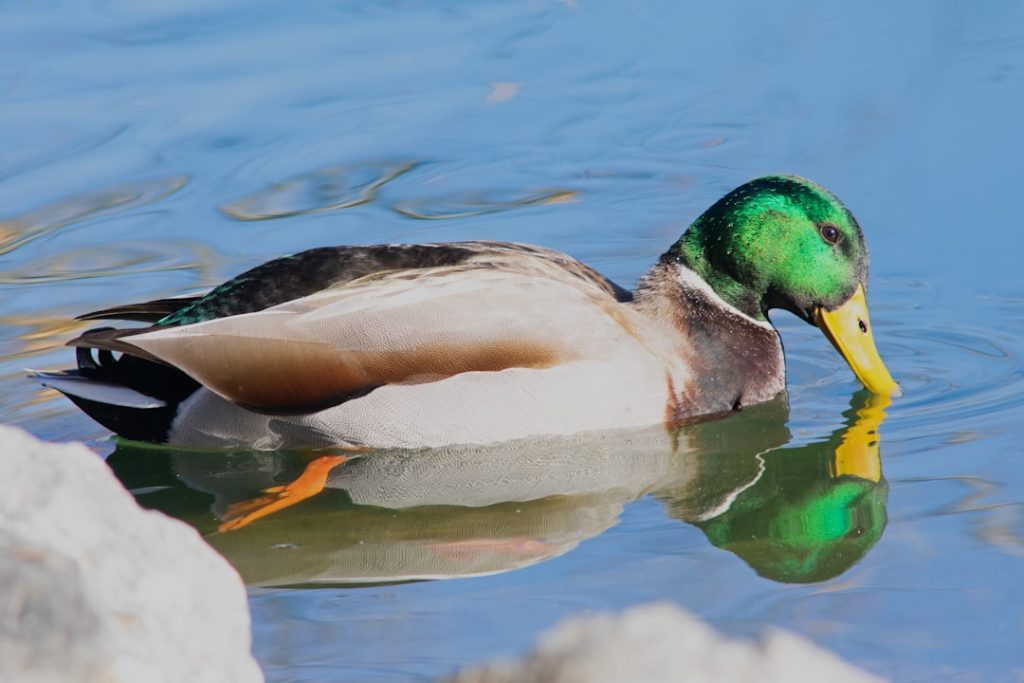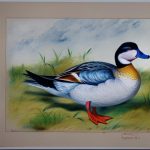Bantam ducks are a smaller version of standard duck breeds, known for their compact size and charming personalities. They are popular among backyard poultry enthusiasts and small-scale farmers due to their manageable size and delightful nature. Bantam ducks come in a variety of breeds, each with its own unique characteristics and traits. These ducks are not only adorable but also productive, providing eggs, meat, and pest control for their owners. In this article, we will explore the characteristics, popular breeds, housing and care, breeding and reproduction, as well as health considerations for bantam ducks.
Table of Contents
Key Takeaways
- Bantam ducks are smaller versions of standard duck breeds, making them popular for backyard and small farm owners.
- Bantam ducks are known for their friendly and docile nature, making them great pets for families and individuals.
- Popular bantam duck breeds include the Call Duck, East Indie, and Dutch Hookbill, each with their own unique characteristics and appearances.
- When housing bantam ducks, it’s important to provide a secure and predator-proof enclosure with access to water for swimming and foraging.
- Breeding bantam ducks requires careful consideration of genetics and proper nesting areas, while common health issues include bumblefoot and respiratory infections.
Characteristics of Bantam Ducks
Bantam ducks are typically half the size of standard duck breeds, making them an ideal choice for those with limited space or looking for a smaller alternative to traditional ducks. They are known for their friendly and sociable nature, often forming strong bonds with their human caretakers. Bantam ducks come in a wide range of colors and patterns, adding a beautiful aesthetic to any flock. Despite their small size, they are excellent foragers and can help control pests in the garden or on the farm. Additionally, bantam ducks are prolific layers, with some breeds laying up to 200 eggs per year. Their eggs are slightly smaller than those of standard duck breeds but are equally delicious and nutritious. Overall, bantam ducks are a delightful addition to any poultry flock, bringing joy and productivity to their owners.
Popular Bantam Duck Breeds
There are several popular bantam duck breeds, each with its own unique characteristics and traits. The Call Duck is one of the most well-known bantam duck breeds, prized for its small size and adorable appearance. Call Ducks come in a variety of colors, including white, gray, and pastel shades, making them a favorite among duck enthusiasts. Another popular bantam duck breed is the East Indies Duck, known for its striking iridescent green plumage and friendly disposition. The East Indies Duck is an excellent forager and a reliable egg layer, making it a valuable addition to any flock. The Miniature Appleyard Duck is also a sought-after bantam breed, prized for its beautiful coloration and gentle nature. These ducks are excellent foragers and make wonderful pets due to their friendly and sociable personalities. Other popular bantam duck breeds include the Dutch Hookbill, Silver Bantam, and Black East Indies, each with its own unique attributes that make them valuable additions to any flock.
Housing and Care for Bantam Ducks
When it comes to housing and caring for bantam ducks, there are several important considerations to keep in mind. Bantam ducks require a secure and predator-proof coop or shelter to protect them from potential threats such as predators and inclement weather. The coop should provide ample space for the ducks to move around comfortably and should be equipped with nesting boxes for egg-laying. Additionally, bantam ducks need access to fresh water for drinking and bathing, as well as a balanced diet of commercial duck feed supplemented with fresh greens and insects. It’s important to provide adequate ventilation in the coop to prevent respiratory issues and to keep the bedding clean and dry to maintain good hygiene. Regular health checks and parasite control are also essential to ensure the well-being of bantam ducks. Overall, providing a safe and comfortable environment, along with proper nutrition and care, is crucial for the health and happiness of bantam ducks.
Breeding and Reproduction of Bantam Ducks
Breeding bantam ducks can be a rewarding experience for poultry enthusiasts looking to expand their flock or preserve rare breeds. When breeding bantam ducks, it’s important to select healthy and genetically diverse breeding stock to ensure the production of strong and vigorous offspring. Ducks reach sexual maturity at around 5-6 months of age, at which point they can begin mating and laying eggs. To encourage successful breeding, it’s essential to provide a suitable nesting area with clean bedding and privacy for the ducks to lay and incubate their eggs. Bantam ducks are excellent mothers and will diligently care for their eggs and ducklings once hatched. However, some breeders may choose to use an artificial incubator to hatch the eggs and raise the ducklings separately for various reasons such as controlling breeding pairs or preserving specific bloodlines. Regardless of the method chosen, proper care and attention during the breeding and reproduction process are essential for the health and success of bantam duck offspring.
Health and Common Issues in Bantam Ducks

Like all poultry, bantam ducks are susceptible to various health issues that require careful monitoring and management. Common health problems in bantam ducks include respiratory infections, parasites, injuries, and nutritional deficiencies. It’s important to observe the ducks regularly for any signs of illness or distress, such as lethargy, decreased appetite, abnormal droppings, or respiratory symptoms. Providing a clean and well-ventilated living environment, along with a balanced diet and access to fresh water, can help prevent many health issues in bantam ducks. Regular veterinary check-ups and vaccinations can also help maintain the overall health of the flock. Additionally, practicing good biosecurity measures can help prevent the spread of diseases among bantam ducks and other poultry. By staying vigilant and proactive in monitoring the health of bantam ducks, owners can ensure a happy and thriving flock.
Conclusion and Considerations for Bantam Duck Ownership
In conclusion, bantam ducks are delightful and productive additions to any poultry flock, offering companionship, pest control, and valuable resources such as eggs and meat. When considering bantam duck ownership, it’s important to research the specific needs and characteristics of different breeds to select the most suitable options for individual preferences and circumstances. Providing proper housing, care, nutrition, breeding management, and health monitoring are essential aspects of responsible bantam duck ownership. With the right knowledge and attention to detail, bantam duck owners can enjoy the many benefits of these charming and productive birds while ensuring their well-being for years to come.
If you’re considering adding bantam ducks to your backyard flock, it’s important to ensure that your coop is suitable for their needs. According to a helpful article on PoultryWizard.com, “How Big Does a Coop Need to Be for a Chicken?” the size and layout of your coop can greatly impact the well-being of your poultry. It’s essential to provide enough space for bantam ducks to roam and nest comfortably. Check out the article for valuable insights on coop sizing and design, as it can be adapted to accommodate bantam duck breeds as well.
FAQs
What are bantam ducks?
Bantam ducks are a smaller breed of duck, typically weighing less than 2 pounds. They are known for their compact size and often have a friendly and docile temperament.
What are the different breeds of bantam ducks?
Some popular breeds of bantam ducks include the Call Duck, East Indies Duck, and the Dutch Hookbill. Each breed has its own unique characteristics and appearance.
What are the characteristics of bantam ducks?
Bantam ducks are known for their small size, short bills, and round bodies. They come in a variety of colors and patterns, and are often kept for their ornamental value.
What is the purpose of bantam ducks?
Bantam ducks are often kept for ornamental purposes, as they are prized for their small size and attractive appearance. Some may also be kept for their eggs or meat, although their small size means they are not typically raised for commercial production.
What is the temperament of bantam ducks?
Bantam ducks are known for their friendly and docile temperament. They are often kept as pets and can be quite sociable with their human caretakers.
What are the care requirements for bantam ducks?
Bantam ducks require a secure and predator-proof enclosure, access to water for swimming and bathing, and a balanced diet that includes duck feed and access to forage. They also need regular veterinary care to ensure their health and well-being.
Meet Walter, the feathered-friend fanatic of Florida! Nestled in the sunshine state, Walter struts through life with his feathered companions, clucking his way to happiness. With a coop that’s fancier than a five-star hotel, he’s the Don Juan of the chicken world. When he’s not teaching his hens to do the cha-cha, you’ll find him in a heated debate with his prized rooster, Sir Clucks-a-Lot. Walter’s poultry passion is no yolk; he’s the sunny-side-up guy you never knew you needed in your flock of friends!







